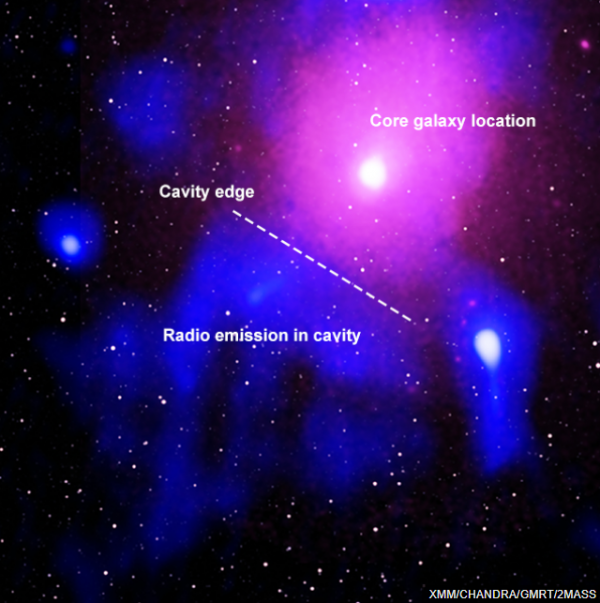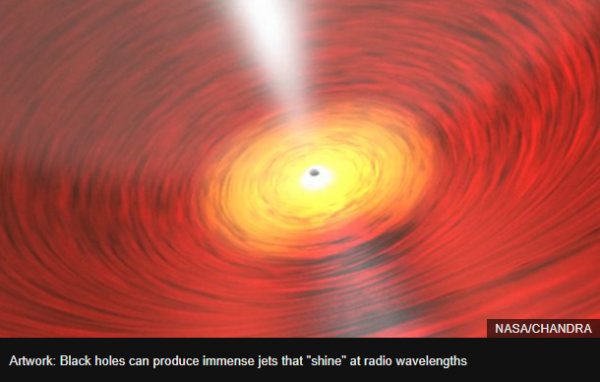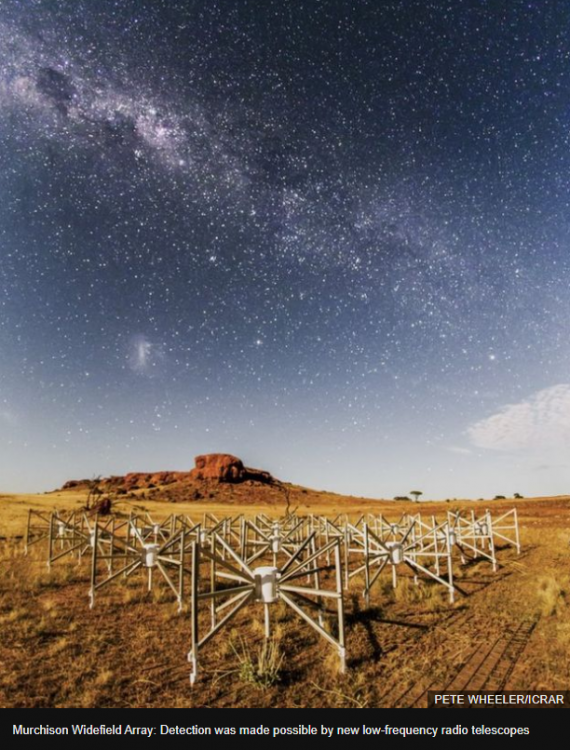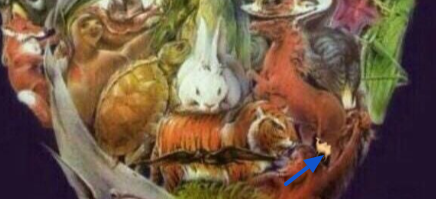-
Posts
20,849 -
Joined
-
Last visited
-
Days Won
49
Everything posted by CaaC (John)
-
- 1,657 replies
-
- space exploration
- astronomy
-
(and 1 more)
Tagged with:
-
‘Mystery object’ in orbit around Earth shown in new images VIDEO Scientists have released new images of a mysterious object that has joined Earth’s orbit. The object created excitement earlier this week when it was announced that it appeared to be a new “minimoon” that had arrived in Earth’s orbit. But scientists say it is too soon to say for sure what the mystery object is and further research is required. Though it could be the artificial object suggested by other astronomers, it might also be an old satellite or space debris. “Either way this is a very compelling object and needs more data to determine what it is,” Grigori Fedorets, the lead astronomer for the observations, said in a statement. The image was taken on 24 February, soon after 2020 CD3 was first spotted. Astronomers hope to get more images of the object, in an attempt to learn more about it. They will look in particular to understand how bright it is shining and how much light it reflects – if it is especially dim, then it is likely to be a rocky body, but if it is shining brighter it is more likely to be a reflective piece of debris, such as a used rocket booster. “Additional observations to refine its position will help us determine this mystery object’s orbit and its possible origin,” he said. The image was taken on 24 February, soon after 2020 CD3 was first spotted. Astronomers hope to get more images of the object, in an attempt to learn more about it. They will look in particular to understand how bright it is shining and how much light it reflects – if it is especially dim, then it is likely to be a rocky body, but if it is shining brighter it is more likely to be a reflective piece of debris, such as a used rocket booster. “Additional observations to refine its position will help us determine this mystery object’s orbit and its possible origin,” he said. Astronomers expect to find many more such objects as new ways of observing them come online. The Gemini Observatory is part of the NSF’s National Optical-Infrared Astronomy Research Laboratory, which is currently preparing the Vera C Rubin Observatory, which will scan the sky of seeing yet more similar objects. “We expect to find a population of these objects once the Rubin Observatory is operational,” said Mr Fedorets in a statement. “Stay tuned!” https://www.msn.com/en-gb/news/techandscience/mystery-object-in-orbit-around-earth-shown-in-new-images/ar-BB10wFoZ?li=BBoPWjQ&ocid=mailsignout
- 1,657 replies
-
- space exploration
- astronomy
-
(and 1 more)
Tagged with:
-
Telescopes detect 'biggest explosion since Big Bang' Scientists have detected evidence of a colossal explosion in space - five times bigger than anything observed before. The huge release of energy is thought to have emanated from a supermassive black hole some 390 million light-years from Earth. The eruption is said to have left a giant dent in the Ophiuchus galaxy cluster. Researchers reported their findings in The Astrophysical Journal. "I've tried to put this explosion into human terms and it's really, really difficult," co-author Melanie Johnston-Hollitt told BBC News. "The best I can do is tell you that if this explosion continued to occur over the 240 million years of the outburst - which it probably didn't, but anyway - it'd be like setting off 20 billion, billion megaton TNT explosions every thousandth of a second for the entire 240 million years. So that's incomprehensibly big. Huge." Cosmic vibrations sensed from unusual star merger Stars align for epic European space missions Team plans to film black hole at galaxy's centre Scientists had long thought there was something strange about the Ophiuchus galaxy cluster, which is a giant aggregation containing thousands of individual galaxies intermingled with hot gas (plasma) and dark matter. US and European X-ray telescopes had spied a curious curved edge to it. The speculation was that this might be the wall of a cavity that had been sculpted in its plasma by emissions from a gargantuan black hole in one of the core galaxies. Black holes are famous for gorging on the infalling matter - any gas or even stars that happen to get too close. But they can also expel prodigious amounts of material and energy in the form of radio jets that then slam through the local environment. Scientists at first doubted the black hole explanation, however, because the cavity was so big. It implied the black hole emission would have to have been unimaginably large. But new low-frequency telescope data from the Murchison Widefield Array (MWA) in Australia and the Giant Metrewave Radio Telescope (GMRT) in India seems to confirm the theory. "This object was actually observed with the Chandra X-ray telescope by a previous team and they saw this bubble in the hot X-ray plasma in the centre of this galaxy cluster, and they said, 'Well, this can't be from one of these energetic outputs because it would be enormous; the scale would be unthinkable'. So, they dismissed that possibility," explained Prof Johnston-Hollitt, who directs the MWA. "But we went back and we observed with low-frequency radio telescopes and discovered that this cavity is filled with radio plasma." The amount of energy required to create the cavity in Ophiuchus far exceeds the previous record-holder - a cluster known by the designation MS 0735+74. "In some ways, this blast is similar to how the eruption of Mount St Helens (volcano) in 1980 ripped off the top of the mountain," said Simona Giacintucci of the Naval Research Laboratory in Washington, DC, and lead author of the study. Prof Johnston-Hollitt added: "To give it another dimension; [the cavity] is about one-and-a-half-million light-years across. So the hole that was punched in the surrounding space in the hot X-ray plasma would take light itself one-and-a-half-million years to traverse. "It's absolutely enormous the amount of energy that we're talking about here." https://www.bbc.co.uk/news/science-environment-51669384
- 1,657 replies
-
- space exploration
- astronomy
-
(and 1 more)
Tagged with:
-
Did early humans in India survive a supervolcano? SLIDES - 1/4 Roughly 74,000 years ago, a supervolcano on the Indonesian island of Sumatra roared to life. Known as the Toba eruption, the event was the largest volcanic blast in the last two million years, scattering ash thousands of miles and leaving behind a 60-mile-wide crater that has since filled with water. Some scientists have argued that the supereruption must have caused a global cold spell, darkening the sky with ash and soot and producing a prolonged period of deforestation in South Asia. If that’s the case, though, the eruption and its aftermath didn’t stop early humans from surviving in central India, scientists report. At the Dhaba dig site in the state of Madhya Pradesh, ancient tools appear in layers of sediment that date to between 80,000 and 65,000 years ago. According to a new study in Nature Communications, the same types of tools continued being used before and after the eruption, so the study authors assert that one continuous population must have survived the fallout from Toba. “The big theory out there was that the Toba supereruption created a volcanic winter, so it led to glaciation, it resculpted ecosystems, [and] it had tremendous impacts on the atmosphere and landscapes,” says Michael Petraglia, an anthropologist at the Max Planck Institute for the Science of Human History. But his group hasn’t found evidence for such large impacts to the landscape at the Dhaba site. “It’s much more subtle than what people had imagined,” Petraglia says. “It doesn’t mean there’s no ecological change, but these hunter-gatherers would have been able to adapt to the changes.” The study authors believe the artefacts from India match similar tools previously found at sites in Africa, Australia, and the Arabian Peninsula that date to the African Middle Stone Age, about 285,000 to 50,000 years ago. Given the similarity between these tool technologies, the team suggests that the site offers yet more evidence of Homo sapiens moving out of Africa earlier than previously believed. Hints of early migrations Genetic evidence suggests modern humans are the descendants of a wave of Homo sapiens that left Africa sometime between 80,000 and 50,000 years ago, although other populations remained in Africa. But fossils found in present-day Israel that appear to be modern humans date back more than 120,000 years. Such findings have led researchers to search for more clues about when smaller groups of humans might have left Africa. When Petraglia went to India nearly 15 years ago to search for evidence of early humans’ migrations, he expected to find artefacts from the Upper Paleolithic—stone tools similar to those used by Homo sapiens in Europe around 45,000 years ago. Instead, his team uncovered much older stone tools at Dhaba, suggesting early humans trekked thousands of miles from Africa to India earlier than expected. The new study provides further evidence against the once-popular belief that the Toba eruption decimated human populations and halted migrations around the world, says Jayne Wilkins, an anthropologist and executive member of the Human Evolution Research Institute in Cape Town, South Africa who was not involved in the research. A 2018 study similarly showed continuous tool use in South Africa around the time of the Toba eruption, and this site in India is about 3,000 miles closer to the volcano than South Africa—so conditions may have been significantly more challenging for survival. “Data from new archaeological sites like Dhaba are showing that by 74,000 years ago, early hunter-gatherers were resilient in the face of major climatic events, aided by complex technologies, social networks, and other sophisticated cultural adaptations,” Wilkins says in an email. “Whether this is exactly the same population or not could be debated, but based on the available information, it’s a reasonable suggestion.” Shards of doubt However, other experts are more critical of the study’s conclusions. “I’m not excited about this paper,” says Stanley Ambrose, an anthropologist at the University of Illinois who has been studying tool technologies, geology, and human evolution since the 1980s. Ambrose collaborated with Petraglia on a 2010 study of tools excavated in southern India, which also suggested continued habitation after the eruption, and he authored a paper in 1998 suggesting Toba may have had an impact on the evolution of Homo sapiens. “I’ve got Toba ash in my lab, in the creases of my boots, in my mind,” Ambrose says. “I’m quite familiar with the location.” He points out that the authors only found six tiny glass shards matching the chemical signature of the Toba eruption, while there were far more volcanic shards found 5,000 miles away in South Africa. The shards at Dhaba, or even the tools, could have been carried to the site by the Son River or other geologic processes, he says. “You can’t call it an archaeological site. You can call it a geological site that has archaeological artefacts in it,” Ambrose says. He also isn’t convinced that the tools found at Dhaba were made by early modern humans, especially because no one has found human fossils from the same time period near the tools. “It takes close, careful forensic scrutiny and tedium to show that this is what the evidence actually shows,” he argues. Petraglia counters that the ash fragments support the dates calculated for the sediment layers and provide additional evidence that the stone tools overlap with the Toba event, but the study team does acknowledge that the glass shards could have been carried in from nearby sites. He adds that this population from India didn’t necessarily contribute genes to modern human populations; they may well have died out or been replaced by later migrations. “We don’t dispute the fact that there was an increase in modern humans after 60,000 years ago,” Petraglia says. “What we are arguing is the idea that modern humans only spread out of Africa once is wrong.” https://www.msn.com/en-gb/news/offbeat/did-early-humans-in-india-survive-a-supervolcano/ar-BB10sSLT
-
Clint Eastwood - Pale Rider (1985) not one of his best but still good, 8.5/10.
-
Newcastle might as well cancel all games then, after the match the players are not allowed to shake the opposition players hand or even the ref and linesman?
-

Manchester United Discussion
CaaC (John) replied to a topic in Premier League - English Football Forum
Wolves can have Lingard for nowt if they want, even in training sessions, the guy is a complete prick and more interested in doing his disco dancing routine. -
Aye, I can imagine someone who is paranoid about his/her health, can't find the camel then rush to his local hospital for a check-up and shitting bricks at the same time
-
Same here, I can't see how that relates to Alzheimer's and I have just found this with the pictured link above, it's more or less a picture puzzle and how is your eyesight etc, imagine trying to look for it if you are pissed as a newt The claim isn’t true; finding a camel in an image has no apparent bearing on one’s risks of developing Alzheimer’s disease, nor any other form of dementia. In fact, the camel in the collage of animals is not in the original artwork, which has been online since 2009. At the time of writing, the artist behind the collage of animals is unknown, but original iterations of the artwork on the Internet show the same work minus the camel https://www.thatsnonsense.com/can-spotting-a-camel-in-a-photo-determine-likelihood-of-alzheimers-fact-check/
-
It took me a while but I spotted the Camel in the end, I was not sure where to post this as I thought about posting it in the Animal Thread at first? The test of the head is to find a camel, it's a test to see who can develop Alzheimer's. Doctors say those who find the camel will be far from developing Alzheimer's.
-
Look at These Mind-Blowing Fossils of 1 Billion-Year-Old Seaweed Strange, vein-like shadows imprinted in ancient rocks are some of the most important clues yet in piecing together the timeline of photosynthesis. At 1 billion years old, the tiny fossils are the oldest example of green algae we've ever discovered. Even from all those aeons ago, the fossils show evidence of characteristics in common with modern algae. They represent multicellular organisms with branching structures and even root systems. Palaeontologists have named the newly discovered, ancient algae Proterocladus antiquus, and it beats the previous record-holder - the fragmentary Proterocladus, 800 million years old (it's possible they're both the same species). This discovery suggests seaweed were already thriving in the ocean, long before plants migrated to dry land. "The entire biosphere is largely dependent on plants and algae for food and oxygen, yet land plants did not evolve until about 450 million years ago," said palaeontologist Shuhai Xiao of Virginia Tech. "Our study shows that green seaweeds evolved no later than 1 billion years ago, pushing back the record of green seaweeds by about 200 million years." The fossils themselves are tiny, just a few millimetres long - flea-sized smears on a sedimentary rock found in the Nanfen Formation in Liaoning Province, North China. But when studied under a microscope, their delicate, branching forms are crystal clear. Older algae fossils have been found - a red alga called Bangiomorpha pubescens, which was dated to around 1.047 billion years ago. It's also an important find for our understanding of photosynthesis, but P. antiquus is different because it's green. It's thought that green plants - Viridiplantae - emerged sometime between 2.5 billion and 635 million years ago. Because ancient plant fossils are rare, narrowing that timeline down has been extremely difficult. Scientists also don't know when they evolved from single-celled to multicellular organisms, or even where they started out. Some believe that, just like multicellular animals, Viridiplantae started off in the ocean as seaweeds before moving onto dry land and evolving into all the different plants we have today, from the mightiest redwood to the smallest moss. Others, however, believe that freshwater rivers and lakes gave birth to plants; from there, they moved into the ocean, before finally ending up on land. P. antiquus supports an oceanic origin - because it's extremely similar to seaweeds that are around today. "There are some modern green seaweeds that look very similar to the fossils that we found," Xiao said. "A group of modern green seaweeds, known as siphonocladaleans, are particularly similar in shape and size to the fossils we found." The branching structures and tiny sizes have led the team to hypothesise that P. antiquus is a type of ancient siphonocladalean, although they note that it cannot be ruled out that P. antiquus developed a siphonocladalean morphology independently, and is now extinct. Nevertheless, even if they were distinct species, their similarity suggests a similar environment; that is, the ocean. That finding, in turn, can help us also understand the ancient ocean environment. And, of course, it tells us more about the complicated and mysterious plant family tree. "These seaweeds display multiple branches, upright growths, and specialised cells known as akinetes that are very common in this type of fossil," Xiao said. "Taken together, these features strongly suggest that the fossil is a green seaweed with complex multicellularity that is circa 1 billion years old. These likely represent the earliest fossil of green seaweeds." https://www.msn.com/en-gb/news/offbeat/look-at-these-mind-blowing-fossils-of-1-billion-year-old-seaweed/ar-BB10m5Lq
-
Secret 17th-century doorway found in Parliament restoration works FRAMES - 1/3 A secret doorway used during a 17th-century royal coronation has been discovered in the House of Commons. The entrance, thought to have been used by political luminaries such as diarist Samuel Pepys and Robert Walpole, the first de facto prime minister, dates back more than 350 years. The hidden walkway had originally been established for Charles II’s coronation in 1660 to allow guests to process to the new king’s celebratory banquet. It was later used by MPs to access the Commons, which was originally in the medieval Palace of Westminster before a fire destroyed much of its structure in the 19th century. Only Westminster Hall – the oldest part of the palace, where the doorway was found – survived the blaze and was incorporated into Parliament’s neo-Gothic rebuild. For the past 70 years, the entrance had remained forgotten behind wooden panelling in a cloister that was formerly used as offices by the Parliamentary Labour Party, according to Commons authorities. A brass plate marks where the doorway had been in Westminster Hall, but historians thought it had been filled in during reconstruction work after the palace was bombed during the Second World War. It was rediscovered following recent investigative work by Parliament’s architecture and heritage team who have been undertaking Westminster’s £4 billion restoration programme. Commons Speaker Sir Lindsay Hoyle said: “To think that this walkway has been used by so many important people over the centuries is incredible. “I am so proud of our staff for making this discovery and I really hope this space is celebrated for what it is – a part of our parliamentary history.” Graffiti written by bricklayers who helped architect Sir Charles Barry restore the palace following the fire in 1834 was also discovered during the works. One sentence of the graffiti, dated 1851, reads: “This room was enclosed by Tom Porter who was very fond of Ould Ale.” https://www.msn.com/en-gb/news/uknews/secret-17th-century-doorway-found-in-parliament-restoration-works/ar-BB10o8DU#image=1
-
R.I.P. Katherine Katherine Johnson: Hidden Figures Nasa mathematician dies at 101 https://www.bbc.co.uk/news/world-us-canada-51619848
- 1,657 replies
-
- space exploration
- astronomy
-
(and 1 more)
Tagged with:
-
FFS, I wonder if he had been on the whisk(e)y Bungling Dunfermline pillowcase disguise bank robber jailed A bank robber who was forced to reveal his identity when he failed to cut eyeholes in his makeshift mask has been jailed for four-and-a-half years. Matthew Davies donned a pillowcase during the raid on a Bank of Scotland in Dunfermline, Fife, but soon discovered he could not see properly. The 47-year-old, who threatened staff with a meat cleaver, escaped with nearly £2,000 on 23 September 2019. FULL REPORT
-
I wonder how much he gets for doing this. https://www.msn.com/en-gb/northamerica/northamerica-top-stories/man-to-walk-tightrope-over-active-volcano/ar-BB10csyZ
-
17/41 SLIDES© Shutterstock Petra, Jordan One of the most exquisite carvings is Al-Khazneh, or “the Treasury,” which features an ornamental facade that reaches 130 ft (40 m) up a rock face. 18/41 SLIDES© BrunoPress Petra, Jordan Petra is also known for its cameo in the film 'Indiana Jones and the Last Crusade.'
-
@nudge, in ref to the above This picture amongst that lot above you will like I think and any other Star Wars fanatics... 13/41 SLIDES© Shutterstock Matmata, Tunisia Matmata's Hotel Sidi Driss was used in ‘Star Wars: A New Hope’ as Luke Skywalker’s childhood home on Tatooine. 14/41 SLIDES© BrunoPress Matmata, Tunisia The underground city was also featured in 'Attack of the Clones.'
-
Impressive underground cities where people actually lived Hidden entrances, ancient tunnels, and complex histories lurk beneath the earth's surface, teeming with tales of a life that few people know much about. Many underground paths or malls claim to be cities, but check out this gallery to see the few real underground habitations where people have actually carried out their lives. SLIDES - 1/41
-
A California man found a 70-pound beehive in his shed housing up to 150,000 bees When one California homeowner noticed a few bees flitting in and out of a small hole at the bottom of his shed two years ago, he didn't think much of it. Herb Herbert told the local ABC affiliate KGTV that the bees even seemed to go away last winter, but returned with a vengeance in the summer. He said he'd often see between 20 and 30 bees buzzing outside his home at any given time. But when he finally hired a bee-removal company last week to come and tear up the flooring in his shed, he was shocked at what they found. The experts revealed a sprawling 70-pound beehive, stretching roughly 30 inches long and housing up to 150,000 honeybees. Videos published by media outlets showed an enormous hive, some of it attached to the floorboards themselves and other parts entrenched in the soil below. All of it was covered by thousands upon thousands of buzzing bees. "I had no idea the scope of what was under there. I mean, it was massive," Herbert told KGTV. "The bee guy said we were lucky - the bees were getting set to expand the hive." The bees were unharmed by the removal, and KGTV reported that the Bee Nice Wildlife Management managed to safely relocate the entire hive and all of the bees inside it. https://www.msn.com/en-gb/news/offbeat/a-california-man-found-a-70-pound-beehive-in-his-shed-housing-up-to-150000-bees/ar-BB10g1QP
-
I've got to see this, it's showing in Edinburgh.
-
Stan Lee


.thumb.png.5eee947252cc5003b698a680b26f5950.png)











